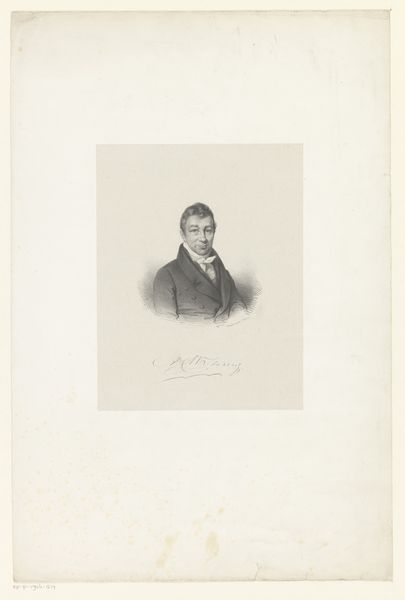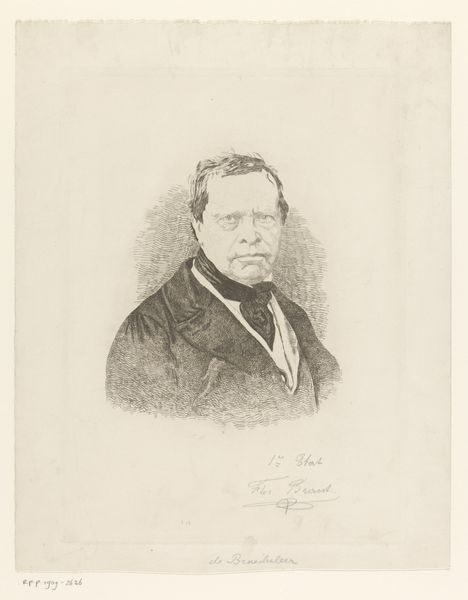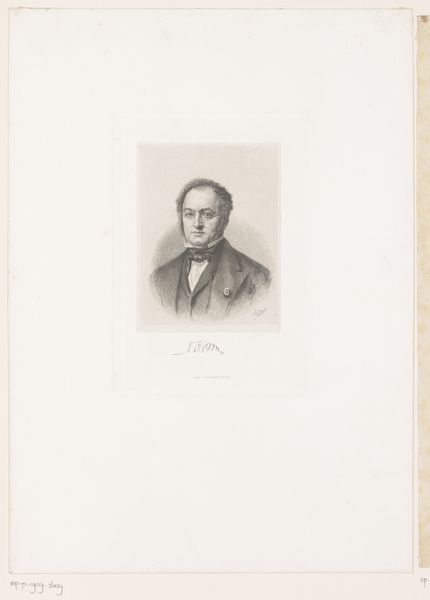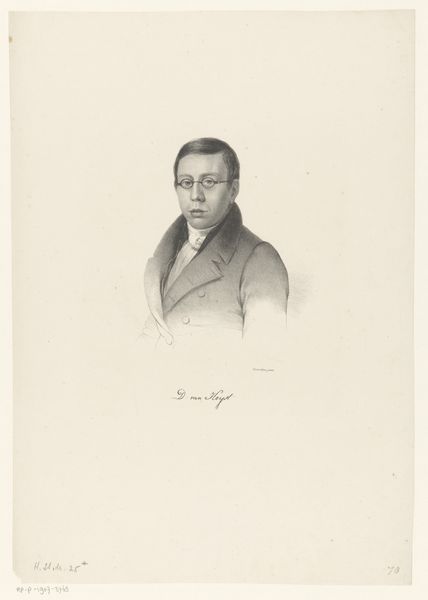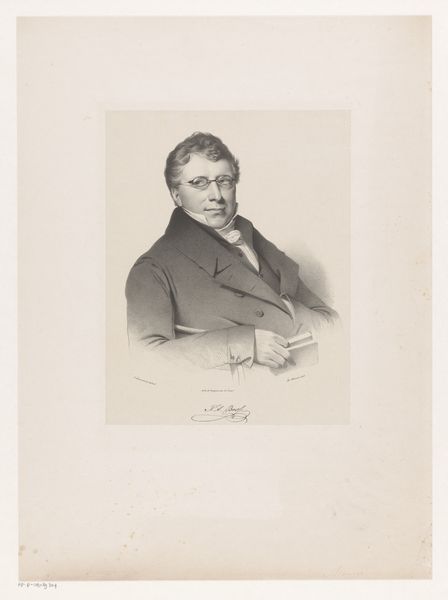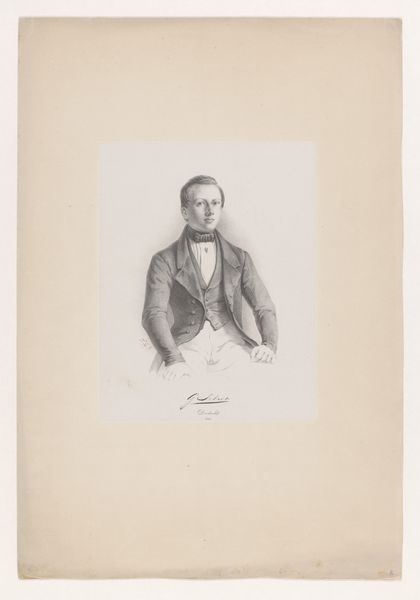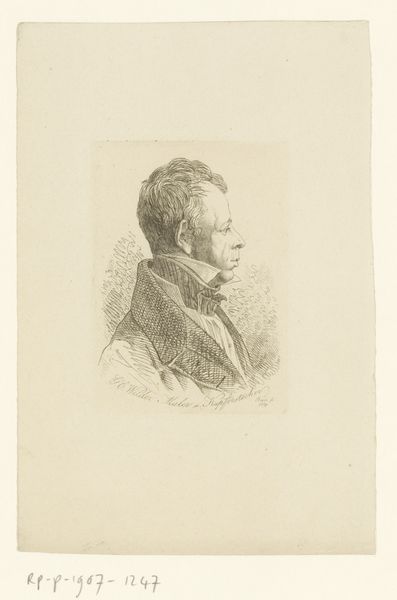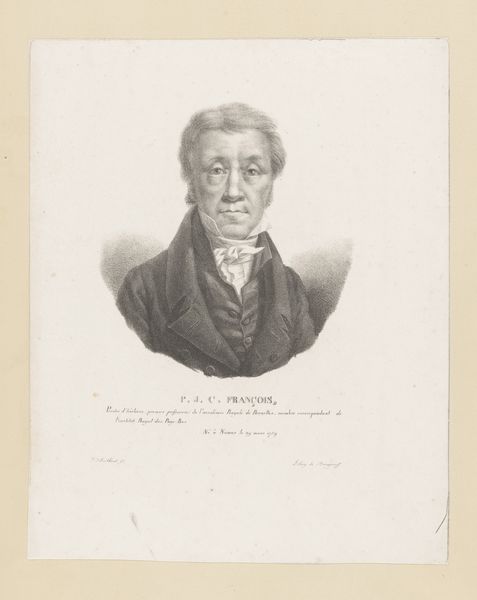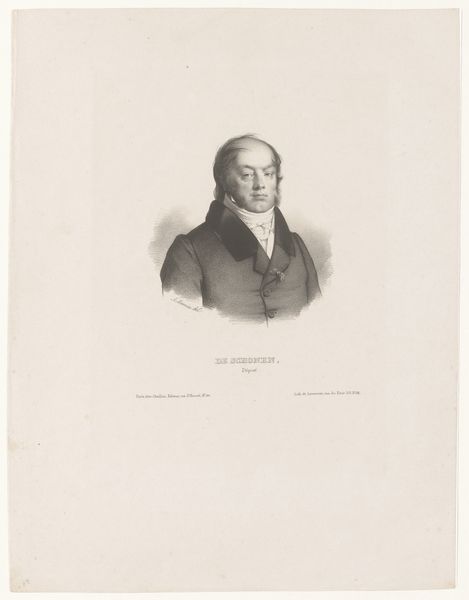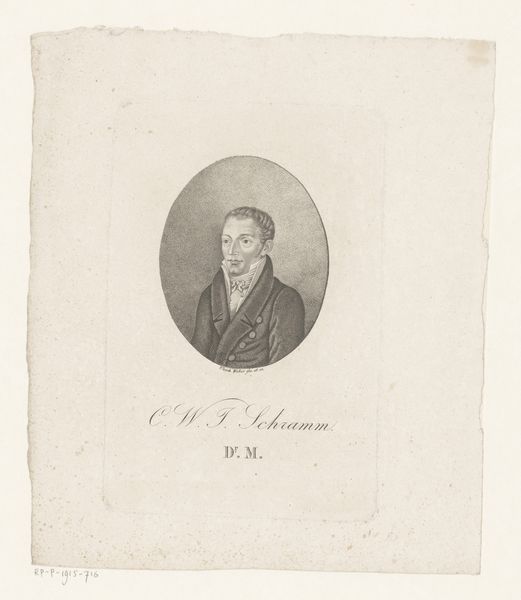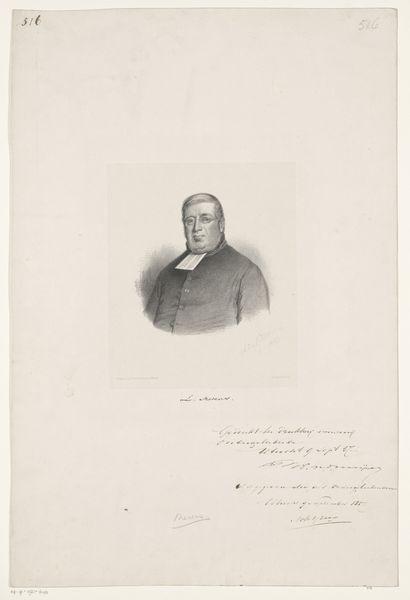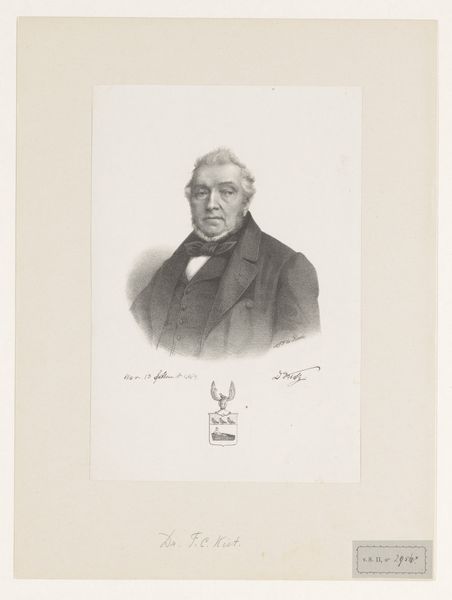
drawing, pencil
#
portrait
#
drawing
#
pencil drawing
#
pencil
#
realism
Dimensions: height 235 mm, width 155 mm
Copyright: Rijks Museum: Open Domain
Editor: Here we have Jozef Hoevenaar’s pencil drawing, "Portret van Johannes Jacobus van Oosterzee," dating from 1818 to 1863. It’s quite a formal portrait, contained within an oval. The detail achieved with pencil is remarkable! How do you interpret the social context of such a piece? Curator: This type of portrait drawing served a very specific function within 19th-century Dutch society. Consider the rise of the middle class and their desire for representation. Photography was still in its infancy, so these pencil portraits became accessible status symbols. It's not just about capturing a likeness, it is about participating in the visualized societal structure. Notice the subject's attire: how does it contribute to this depiction? Editor: It seems carefully chosen to convey respectability, doesn’t it? Perhaps indicating a certain level of education or professional standing? Curator: Precisely! The neat suit, the subtle details…it's a carefully constructed image designed for public consumption and also created, presumably, for circulation amongst a private social circle. It says, “I am a man of substance.” Furthermore, it reflects how the art market catered to the bourgeoisie by offering affordable ways to emulate the aristocracy. Can you imagine its role in solidifying social identities? Editor: Absolutely! It democratized portraiture, in a way, offering wider access to art, though one may argue that such a function reified class boundaries. This gives me a new perspective on this seemingly simple drawing. Curator: And it illustrates the power dynamics embedded within seemingly benign artistic choices. We must constantly question what images do, not just what they depict. Editor: This conversation really illuminates how social context deeply influences the creation and reception of even seemingly straightforward portraits. Thanks! Curator: My pleasure. Considering that pencil drawings like these circulated publicly in print form, there are yet other channels we can think of in terms of how images shape perception.
Comments
No comments
Be the first to comment and join the conversation on the ultimate creative platform.
